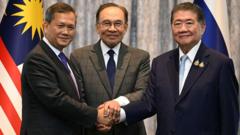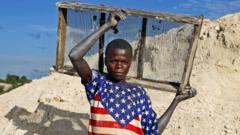In a bid to address the nation's plummeting birth rates, China has rolled out its first nationwide subsidy program aimed at supporting parents of young children. The government is offering families 3,600 yuan (approximately $500) annually for each child under three years old. This initiative is a critical response to China's declining population, which has seen a consistent drop even after the controversial one-child policy was abolished nearly ten years ago.
China's New Subsidy Initiative: $1,500 to Encourage Birth Rates

China's New Subsidy Initiative: $1,500 to Encourage Birth Rates
In a groundbreaking move to combat declining birth rates, China introduces financial incentives for families with young children.
The financial assistance aims to alleviate the financial burden of raising children on approximately 20 million families, according to state reports. The new policy, unveiled recently, could provide parents with a total of up to 10,800 yuan per child over the years. Notably, the policy will be retroactively applied to children born from the start of 2024, allowing families with children born between 2022 and 2024 to claim partial reimbursements.
Several provinces in China have already implemented localized financial incentives to encourage higher birth rates. For example, Hohhot has begun offering families up to 100,000 yuan for each baby born to couples with three or more children. Shenyang has also joined the trend by giving families with third children under three years old a monthly stipend of 500 yuan. Moreover, Beijing has called on local governments to create plans for providing free preschool education—a move intended to make raising children less financially daunting.
According to a study by the YuWa Population Research Institute, raising a child in China is among the most expensive in the world, averaging around $75,700 until they turn 17. Despite a slight increase in the number of births, with 9.54 million babies born in 2024, the population continues to decline, with China's 1.4 billion citizens rapidly aging—raising serious concerns for the future demographic landscape.
Several provinces in China have already implemented localized financial incentives to encourage higher birth rates. For example, Hohhot has begun offering families up to 100,000 yuan for each baby born to couples with three or more children. Shenyang has also joined the trend by giving families with third children under three years old a monthly stipend of 500 yuan. Moreover, Beijing has called on local governments to create plans for providing free preschool education—a move intended to make raising children less financially daunting.
According to a study by the YuWa Population Research Institute, raising a child in China is among the most expensive in the world, averaging around $75,700 until they turn 17. Despite a slight increase in the number of births, with 9.54 million babies born in 2024, the population continues to decline, with China's 1.4 billion citizens rapidly aging—raising serious concerns for the future demographic landscape.





















